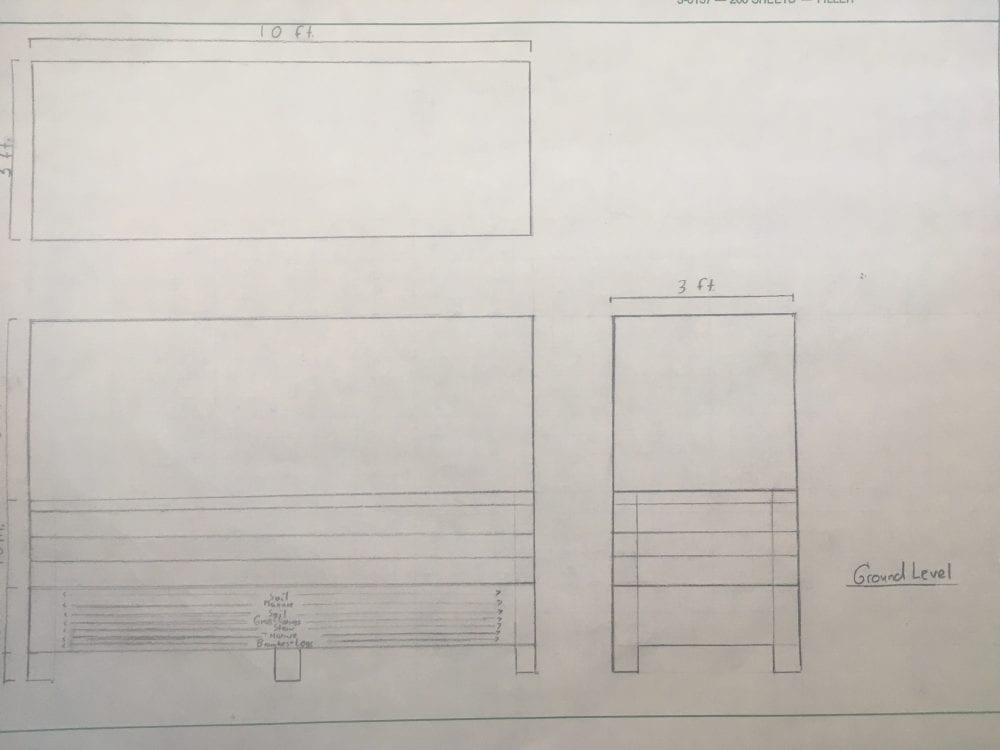By Denise Matthews
An underground web of life lives hidden away in the soil of every healthy garden. This community of micro and macro-organisms works together to release nutrients for plant growth. The worms, insects, bacteria, protozoa, and fungi living in your soil thrive best in cool, moist conditions, but maintaining these conditions in the arid Southwest has always been a central challenge in gardening and agriculture.
In New Mexico, traditional practices for making the most of our limited water supply include:
- Choosing crops, such as corn, that are tolerant of the sun
- Planting crops that grow well together and create microclimates that benefit their companions, like in Three Sisters gardens
- Planting in areas that receive more water flow than surrounding areas
- Slowing down run-off with dams and other structures
- Shading the soil with the plants themselves or with rock mulches

At the Los Alamos Nature Center, we are working with a Los Alamos High School student, Ignatius Kuropatwinski, who is working toward becoming an Eagle Scout, to build a new water-wise education garden that demonstrates a mix of water-conserving methods you can try in your own home garden.
Ignatius says, “I wanted to combine my Eagle Project with a special award called the William T. Hornaday Badge. The William T. Hornaday Badge asks that you complete five wildlife protection merit badges, then plan, lead, and carry out a significant project in natural resource conservation. Fewer than 1,100 people have earned this badge. I spoke with PEEC and settled upon building three garden beds with a drip water irrigation system that also doubled as a learning opportunity for young children.”
The native soil in New Mexico is often low in organic matter and can be improved by adding compost and soil amendments for vigorous plant growth. Filling a raised bed with commercial topsoil is a short-term solution that will quickly dry out, lose nutrients, and require heavy amendment. The nature center’s new education garden will take advantage of a layered soil system, called Hügelkultur, to build long-term soil structure.
Hügelkultur, a German word meaning “Hill Culture”, builds healthy soil by creating a mound with layers of branches, manure, leaf litter, straw, and topsoil. Hügelkultur beds decompose over several years, releasing nutrients for plant growth. This minimizes the amount of fertilizer needed and reduces excess nutrients that can leach into groundwater. The branches act as wicks that absorb water, then distribute and release it during drought conditions.
The garden will be maintained by our weekly Nature Playtime class, where children will be able to plant vegetables and pollinator-attracting flowers, play, and learn about water-saving strategies. The children will experiment with both traditional and modern watering methods including ollas, waffle gardens, and drip irrigation. Inconsistent watering creates stressful conditions for both plants and soil life, so a combination of watering practices will be useful for our once-a-week program. Drip irrigation provides scheduled, low-volume watering and greatly reduces the amount of evaporation and run-off that occurs when watering with a sprinkler or a hose.
After planting, a nice layer of mulch added on top traps precious water in the soil. Free garden mulch from the Los Alamos Eco-Station or straw are good options for mulch. Finally, in order to discourage grazing wildlife from the nearby canyon, Ignatius’s garden design includes cages that can be flipped off to allow access for gardeners.
The combination of thoughtful soil structure, water-wise irrigation, and mulch are one way of making the most of New Mexico’s dry growing conditions. We are excited to see this new education garden completed this summer. Many thanks to Ignatius for all his hard work in planning.
The nature center currently has three other plant demonstration gardens maintained by volunteers, including drought-tolerant, native plant, and pollinator gardens, all of which employ various strategies to conserve water. You can find a list of plants represented in these gardens here.

Great work, Denise! I enjoy seeing the pictures of how the garden beds are layered.